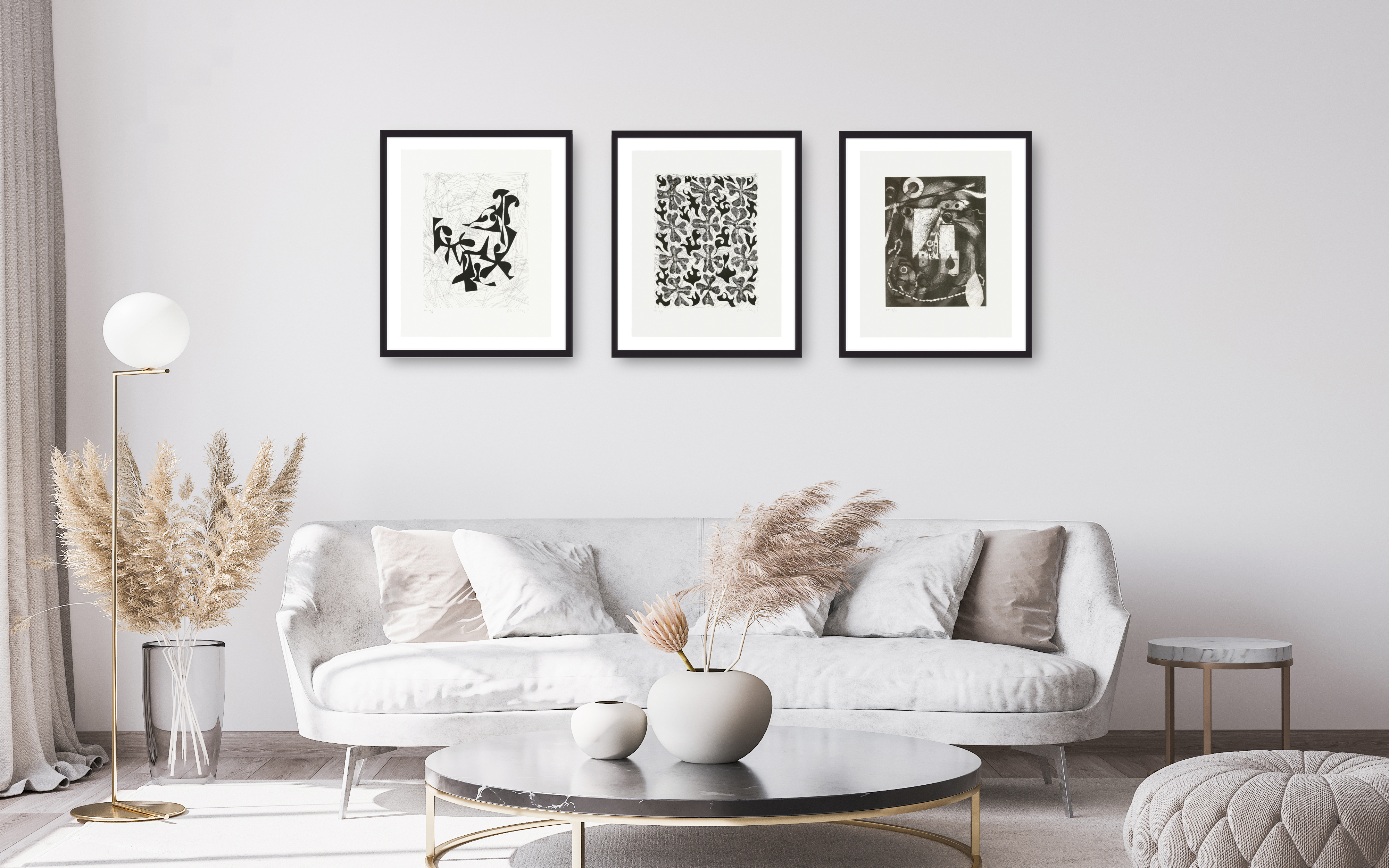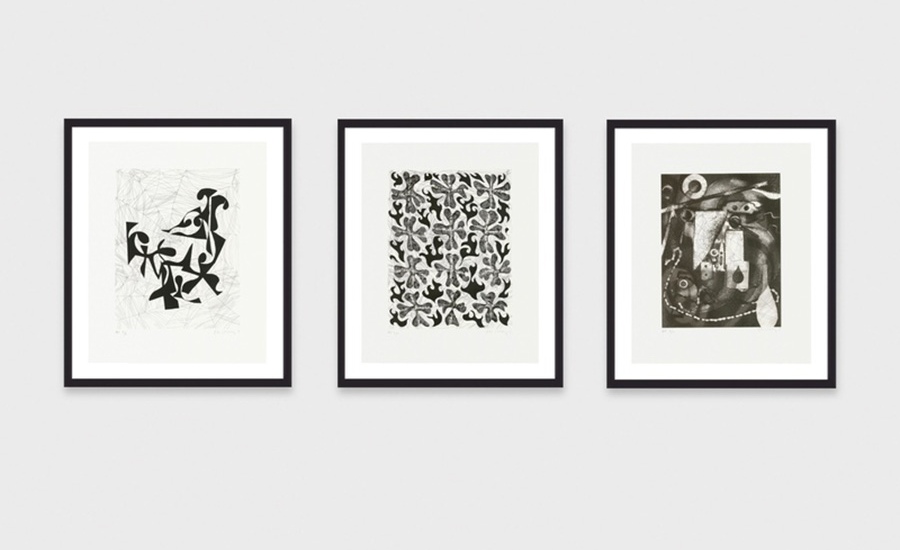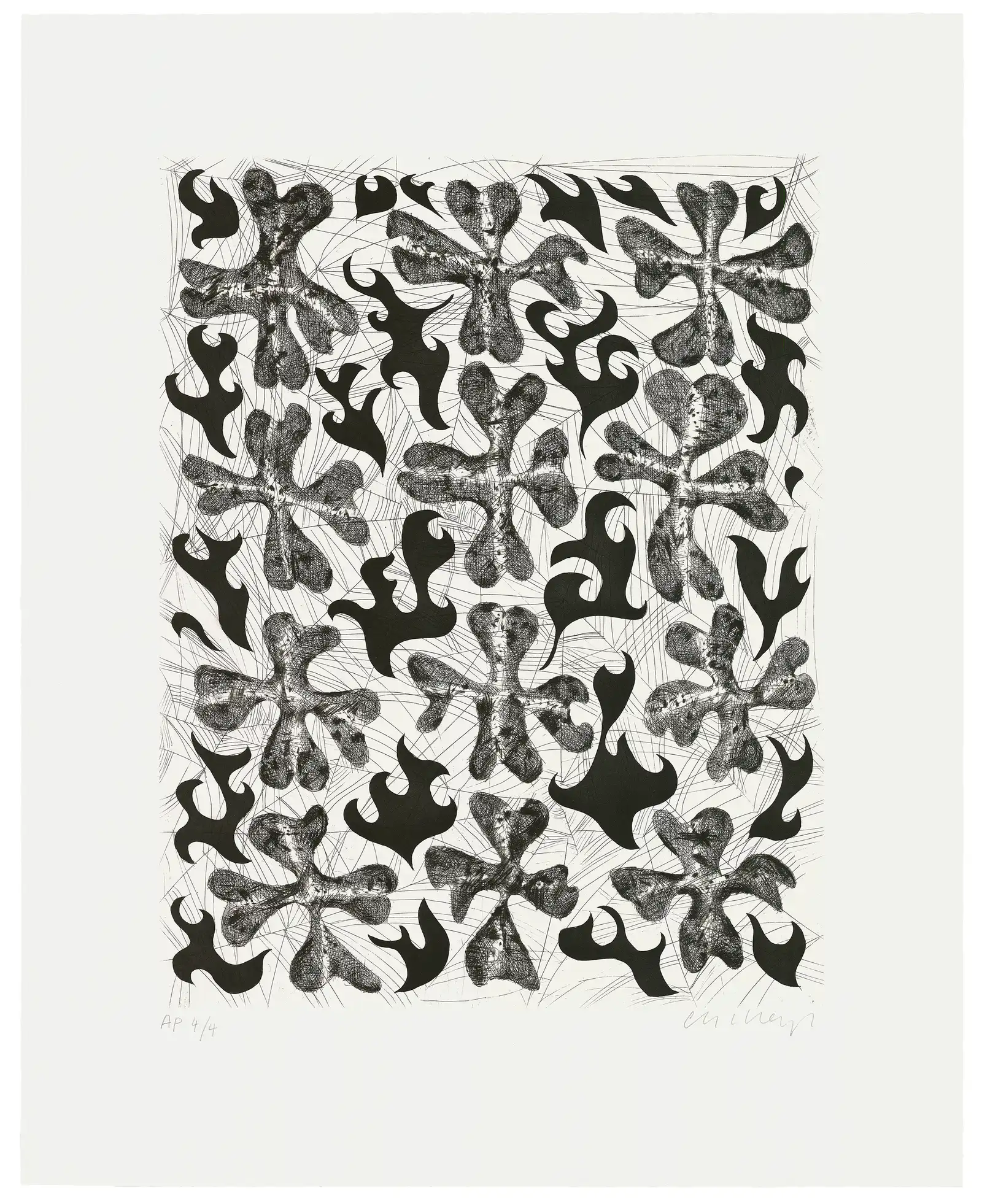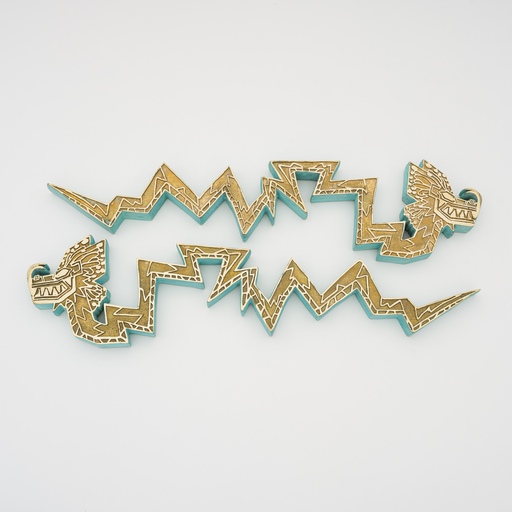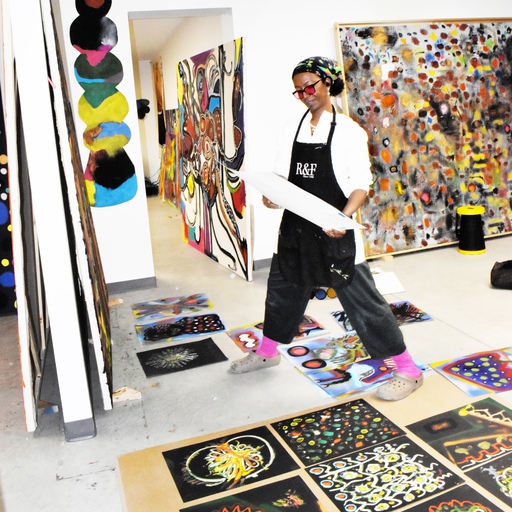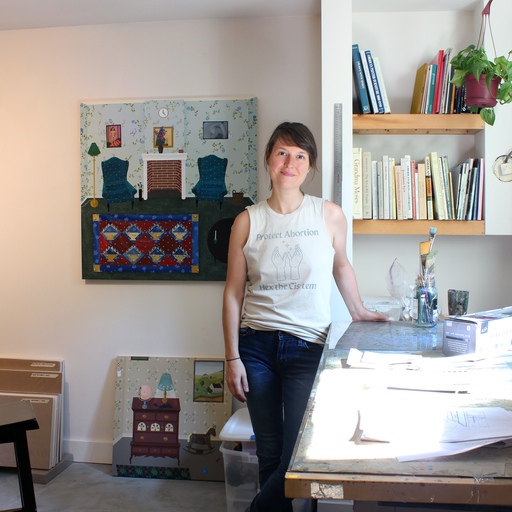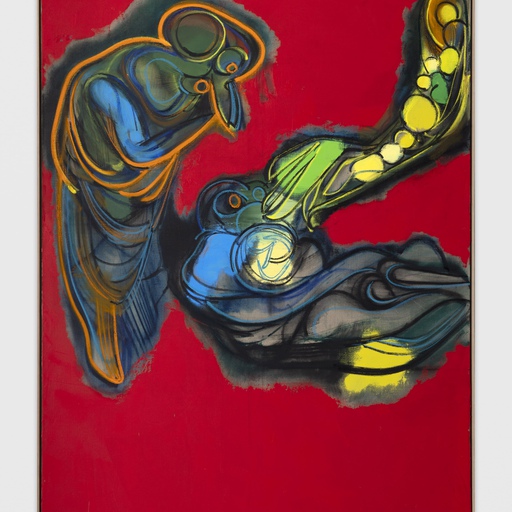“I just want to get the viewer to move past definitions and on to something more personal and fragile, a place where thoughts and feelings meet, where looking feels like thinking.”
Charline von Heyl's layered compositions have challenged the traditional conventions of painting by fusing loose gestures, line drawing, geometric shapes, and both figurative and abstract forms.
In her three new editions with Universal Limited Art Editions (ULAE) a similar mindset is at play.
In Villa Curonia, - inspired by the Gertrude Stein story “Mabel Dodge at Villa Curonia ("I was thinking of the mixture of wallpaper, vibes of time and space and atmosphere") - von Heyl used folded paper to cut out shapes into a pattern. In Metals Metals (inspired by the inventor of prose poems, Russell Edson, and his poem of the same name) both lithography and etching is used in a similar way, employing experimental etching techniques with etching the plate, folded/cut out shapes as masks, and layering imagery.
Charline von Heyl was born in Germany in 1960 and has lived in the United States since 1996. She studied painting in Hamburg and Düsseldorf and participated in the Cologne-based art scene in the 1980s. She currently divides her time between New York, NY and Marfa, TX.
Von Heyl’s first survey show was at Le Consortium, Dijon in 2009. Her first U.S. museum show was at the Dallas Museum of Art in 2005 and her first US survey was at the Institute of Contemporary Art in Philadelphia in 2011.
Her work has been exhibited both in the United States and abroad, including solo museum exhibitions at the Hirshhorn Museum and Sculpture Garden, Washington DC; the Museum Dhondt-Dhaenens, Deurle, Belgium; Corbett vs. Dempsey, Chicago; the Tate Liverpool, United Kingdom; the Kunsthalle Nurnberg, Germany; Le Consortium, Dijon, France, and the Vienna Secession, Vienna, Austria, among many others.
We asked her a few questions about the new editions which you see below and can buy here, and her wider practice.
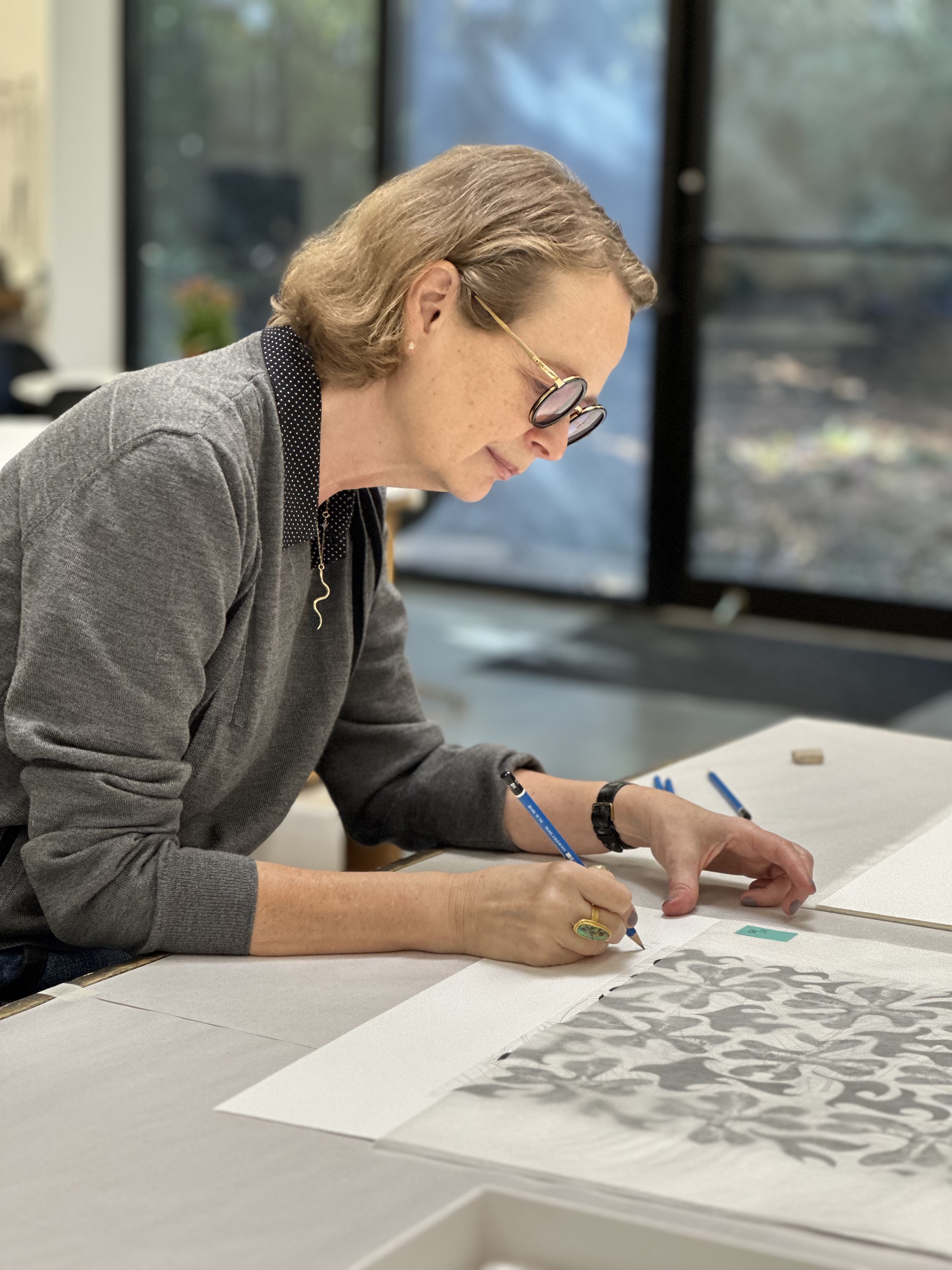
Charline von Heyl photograph courtesy of Universal Limited Art Editions and the Artist
Matisse and Cezanne are often cited as inspirations in your work. One of these new editions has the name Villa Curonia, presumably referencing the Gertrude Stein book A Portrait of Mabel Dodge at the Villa Curonia, which was praised by Dodge as essentially Matisse and Picasso in print. What sends you down these 'rabbit holes' and how do you navigate the balance between intuition and intentionality in your paintings?
I choose the titles after the work is finished, but sometimes the title actually finishes the work, as is the case here. When I look for a title, I try to find a mood value first, “Villa Curonia” gives a sense of a place, slightly musty but elegant, of a different time, with wallpaper, and spiderwebs, and that mood now belongs to the print. It is not necessary to get the Gertrude Stein reference, the print is not an illustration of the story, but of course I was getting joy out of that link to one of my favorite worlds. I’m quite impressed that you followed me down that hole and that you found that great quote!
As for intuition and intentionality, they actually kind of overlap when I am working, I would even say that when I am really tuned in they become one. That’s when things are starting to happen, when it feels as if the work is making itself.
CHARLINE VON HEYL - Old Words, 2023
Intaglio with relief on En Tout Cas paper 24 5/8 x 19 7/8 in. (62.71 x 50.48 cm) Edition of 14 Image courtesy of Universal Limited Art Editions © Charline von Heyl / Universal Limited Art Editions
You're praised for your unique approach to abstract figuration, how do you approach experimentation and risk-taking in your practice? How do you succeed - or sometimes fail - and how do you define success in conveying meaning through non-representational forms?
I’ve never heard the term “Abstract Figuration” before, and I love it in all its hardcore paradoxical authority! I actually don’t think in any particular terms when I think of my work. That’s an outside thing, and often either misleading or restricting.
And I’m pretty much self-taught, like a lot of painters of my generation that grew up in an environment hostile to painting. So experimentation was actually my way of working from the beginning. I built the paintings more than I painted them, it was more an architecture of layers and effects , with a deep distrust and constant sabotage of my own virtuosity.
I know when a painting is done and good, but it is impossible to describe how I get there. I know I need to surprise myself, so of course I am setting myself up for failure, failure is an activation. It is the unknown, the unpredictable.
What you call failure, or success, or even risk, is just the vocabulary of dynamic composition for me. What I want to create is an image, a visual event, something somehow whole and new and strange and beautiful and interesting. A presentation, not a representation or abstraction.
CHARLINE VON HEYL - Villa Curonia, 2023
Intaglio on En Tout Cas paper 24 5/8 x 19 7/8 in. (62.71 x 50.48 cm) Edition of 15 Image courtesy of Universal Limited Art Editions © Charline von Heyl / Universal Limited Art Editions
With a lot of your work we think we can detect something but then on looking again are confounded that it's disappeared. Can you tell us about any recurring motifs or symbols and their significance?
I find images more interesting if they are ambivalent, so yes, things shift around, patterns unravel or tighten, flames, handprints, rabbits and birds appear again and again and mean what you think but are usually simply just needed in the composition, to add energy or focus.
Can you walk us through your creative process from conception to completion of a painting, focusing on key areas of it that are transformative? I don’t think I can. First of all there is no conception, no concept, no idea, but only an initial move to start, a color or a gesture, a vague desire. And then it is just move and countermove, completely different in each individual painting. Sometimes it is all there right away, sometimes it takes forever. There are no rules and there is no formula.
What trends have you observed in the reception of your work? This is a question you should ask my gallerists, but I can say as much as this: I have been lucky to have had the attention and the trust of some very serious, knowledgeable and sympathetic collectors very early on. That was important.
CHARLINE VON HEYL - Metals Metals, 2023
Lithograph and intaglio on En Tout Cas paper 25 5/8 x 20 7/8 in. (65.08 x 53.02 cm) Edition of 28 Image courtesy of Universal Limited Art Editions © Charline von Heyl / Universal Limited Art Editions
What message or emotions do you hope viewers take away from experiencing your work?
The best thing that can happen is when people make a work of art their own, and that seems to be what is happening with my paintings, and also with my prints, it becomes a part of their life and they find their own meaning, their own feelings, their own memories in them, it becomes personal, almost private. They really own it then.
You can buy the new Charline von Heyl new editions here.
